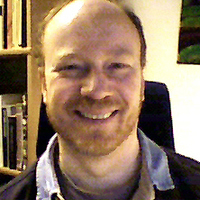Torsten Hylen
Torsten Hylen is a Swedish scholar in Islamic Studies who worked on history and formation of Shi'ism.
Torsten Hylen | |
|---|---|
 | |
| Nationality | Swedish |
| Occupation | Professor and Author |
Educations
- Th.D. in the history of religions from Uppsala University, Sweden, in 2007
Title of His thesis was “Hussain, the Mediator: A Structural Analysis of the Karbala Drama according to Abu Jafar Muhammad b. Jarir al-Ṭabari In this study”
It is an analysis of the Event of Karbala i.e. the death of Hussain b. Ali in the hands of an army which had been sent out by the Umayyad authorities, at Karbala in 60/680 as it is retold by the Muslim jurist and historiographer Abu Ja`far Muḥammad b. Jarir al-Ṭabari.
professional background
- Associate professor in religious studies at Dalarna University.
- Worked at the School of Humanities and Media studies, Dalarna University.
Academic interests and Research
Dr Hylen’s research mainly concerns the early history of Islam with an emphasis on the formative period of Shi`ism, but He has also written about theoretical issues within the history of religions and the didactics of religion. Other interests of him are Islam in West Africa, and apocalyptic ideas in contemporary Islam.
He has worked on "Devotion to Hussain in Early Shi'ism", the purpose of which is to trace the development of the image Hussain b. Ali among early Shi'ites (i.e. up to the end of the 8th century CE).
His next academic project is “The Karbala Story: From skirmish to cosmic Battle.” He believed that the story of Hussain’s death at Karbala is in process of being elevated from a tragic account of a battle to a myth with its associated rituals, and that parts of this transformation can be traced through some of the early historical accounts.
Publications
- Emerging Patterns of Authority in Early Shiʿism: al-Mukhtār and the Aesthetics of Persuasion
- Mukhtar and the Mahdi: A Critical Inquiry into the Sources
- Myth, Ritual, and the Early Development of Shiite Identity
- Dating versions of the Karbalāʾ story
- The Date of the Story of the Tawwābūn
- Al-Mukhtar and the Aesthetics of Persuasion
- The hand of God is over their hands (Q. 48:10): On the Notion of Covenant in al-Ṭabarī's Account of Karbala
- Shiitisk islam i vardande: Myt, rit och identitet
- Closed and open concepts of religion: The Problem of Essentialism in Teaching about Religion
- Essentialism i religionsundervisningen, ett religionsdidaktiskt problem (in Swedish)
- Berätta om Husayns död så att jag tror jag var där (in swedish)
- An Attempt at Structural Analysis of the Karbalāʾ Drama according to Al-Ṭabarī